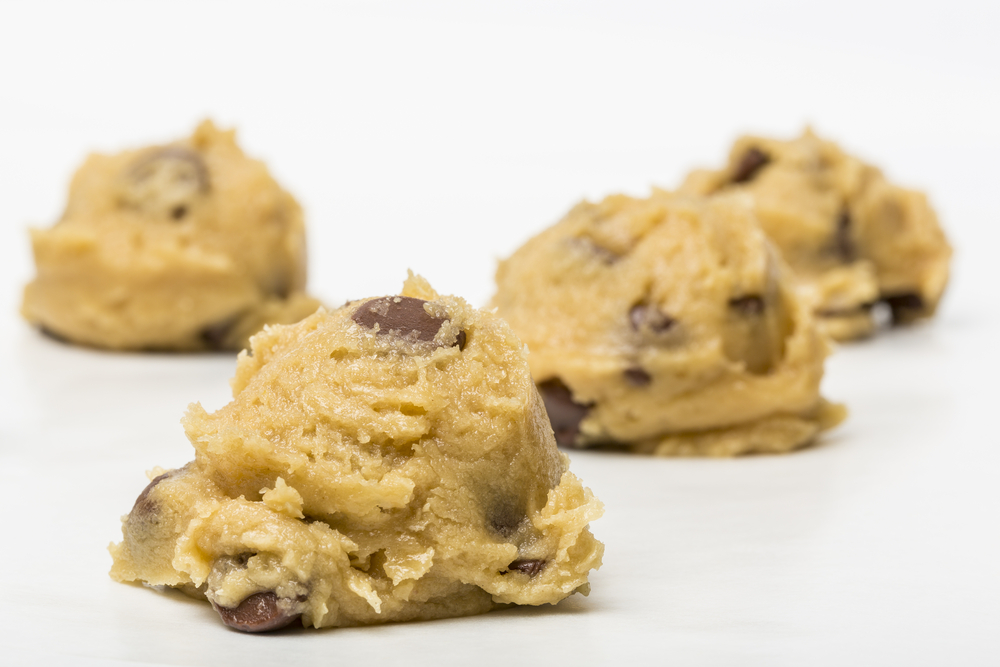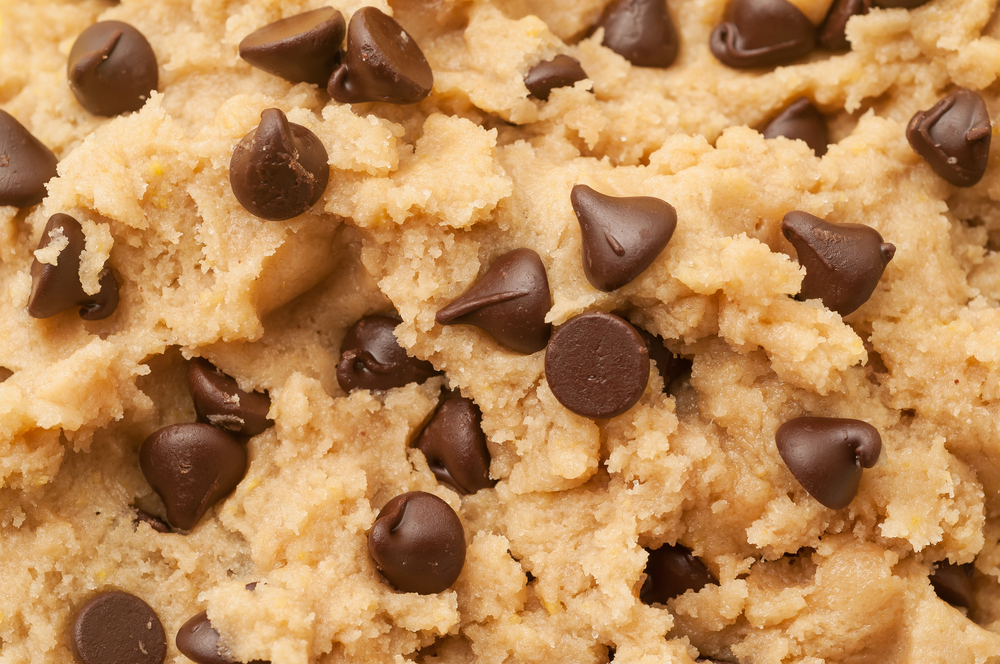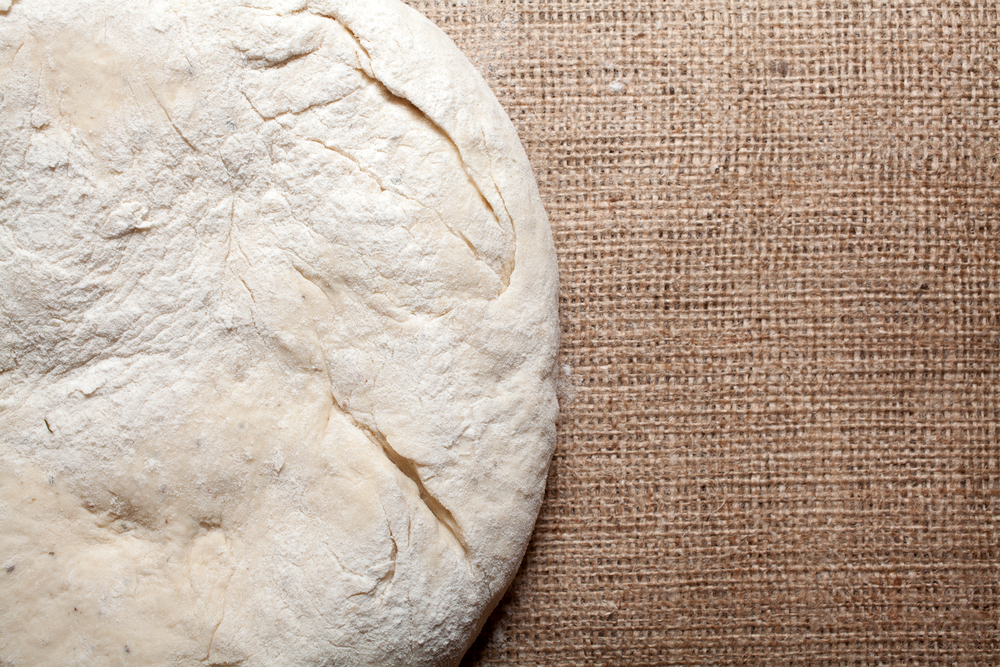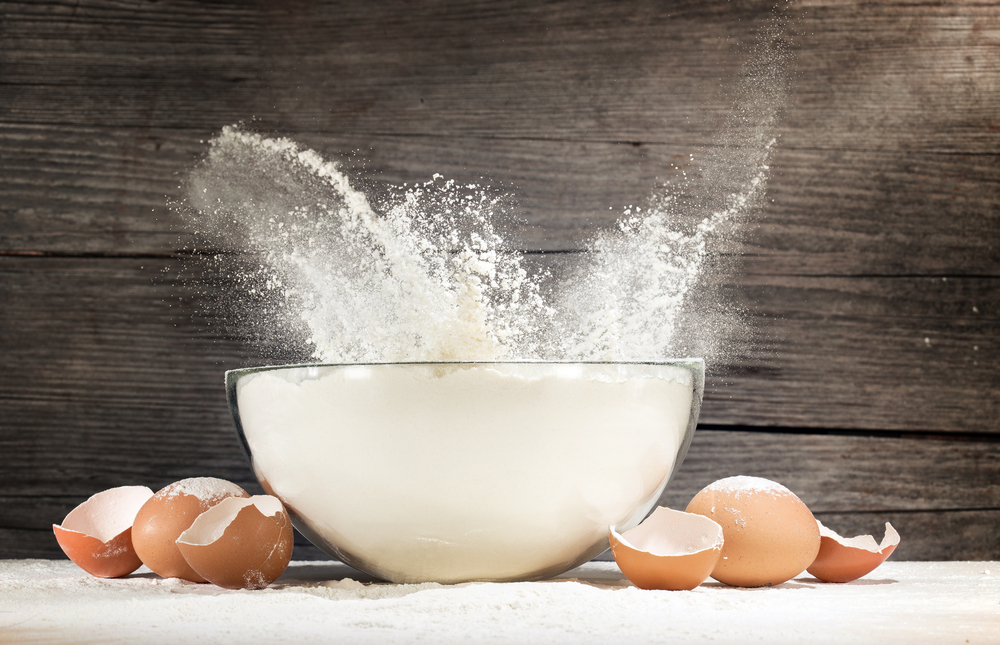Pastry blenders are an essential tool for bakers, as they quickly and efficiently blend dry ingredients with fats to create the perfect pastry dough.
However, there may be occasions when a pastry blender is not readily available, or perhaps you’re a home baker who doesn’t have one in your toolkit.
Fear not, as there are several substitutes that can save the day and help you achieve the same desirable texture for your baked goods.
Understanding the role of a pastry blender and the desired outcome of using one is important when looking for an alternative. The purpose of a pastry blender is to efficiently cut fat into flour, which creates flaky layers in the final baked product.
When seeking a substitute, it’s crucial to find a method that will mimic this action and help create the desired tender, crumbly texture.
Key Takeaways
- Pastry blenders are essential for creating flaky dough, but there are viable substitutes.
- The goal of a pastry blender substitute is to replicate the action of cutting fat into flour.
- Several kitchen tools and techniques can be employed as effective pastry blender alternatives.
Understanding the Role of a Pastry Blender
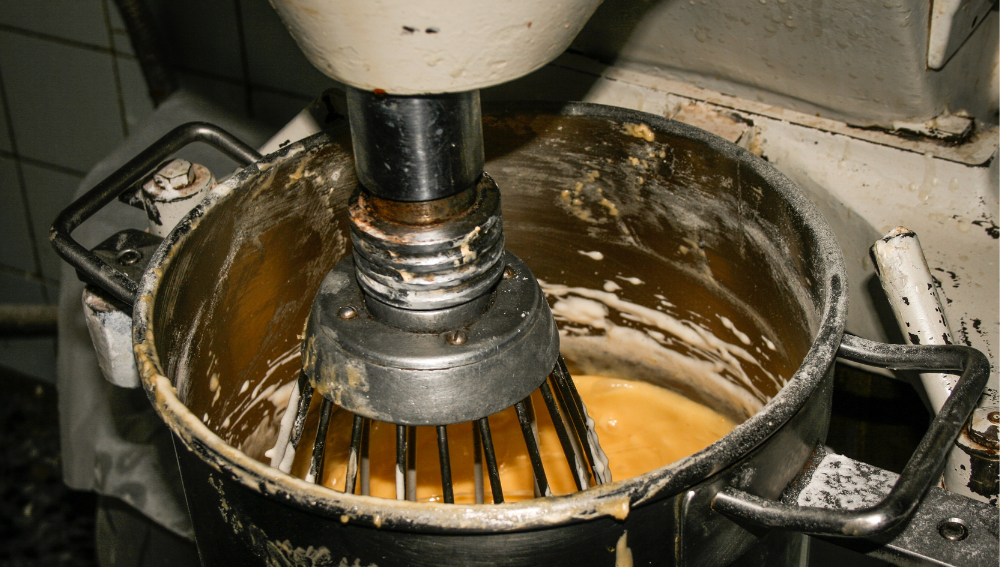
A pastry blender is a kitchen tool specifically designed to combine ingredients, particularly when making dough for flaky baked goods.
Its main purpose is to cut solid fats like butter or shortening into flour, creating a crumbly texture that is essential in creating the light and flaky layers seen in pie crusts, biscuits, cookies, and flaky pastries.
The pastry blender is designed with a handle connected to a semi-circular wire or metal structure. This allows for an effortless cutting motion, blending the solid fats with the dry ingredients without completely breaking down the fat.
By maintaining some larger fat pieces, it creates pockets within the dough that eventually lead to the desired, flaky end product.
It is crucial to understand when to use a pastry blender. While it is ideal for pie crusts and biscuits, it is not necessary for all types of baked goods.
For instance, cakes typically require a more homogeneous mixture, and thus, a pastry blender may not be the ideal tool in such cases.
Incorporating a pastry blender in your baking process can significantly improve the texture of your flaky pastries.
It offers a quick and efficient way to create the perfect dough, ensuring that your baked goods have that sought-after, delicate, and delicious flakiness.
The Anatomy of a Pastry Blender
A pastry blender is an essential tool for anyone who loves baking pies and pastries. It is designed to efficiently combine dry ingredients and fats, resulting in a consistent, flaky dough.
The pastry blender consists of three main components: the handle, the blades, and the connection between the two.
Handle: The handle of a pastry blender is typically made of either wood or metal. Wooden handles provide a comfortable grip and are more resistant to heat, while metal handles are considered more durable and long-lasting. Both materials ensure a firm and easy grip while blending ingredients.
Blades: Pastry blenders typically feature stainless steel blades, which are known for their strength and resistance to rust.
The blades can have various shapes, including curved or straight, and may consist of multiple layers for more efficient cutting.
The edges of the blades are designed to cut through the fat and mix it evenly with the dry ingredients.
Some pastry blenders have wire blades, which are made of stainless steel wires that are twisted and arranged in a loop. These wire loops work similarly to the flat blades in cutting and blending the ingredients.
Connection: The blades must be securely attached to the handle, as this ensures the stability and effectiveness of the pastry blender.
The connecting part is often made of metal, which provides a strong and long-lasting bond between the handle and the blades. Stainless steel is preferred for its rust-resistant properties.
In conclusion, the optimal pastry blender features a comfortable handle, sharp stainless steel blades, and a sturdy connection between the two.
These elements contribute to a reliable and efficient blending experience, resulting in delicious, flaky baked goods.
Why Substitute a Pastry Blender

There are several reasons to consider substituting a pastry blender in the kitchen. One primary reason is the availability of the tool.
Not everyone has easy access to a designated pastry blender, especially when working in a less equipped kitchen or while traveling.
In such cases, finding a substitute becomes essential for ensuring seamless cooking and baking.
Another reason for substituting this kitchen tool is its limited usage. A pastry blender is specifically designed to cut cold butter or shortening into flour for making dough.
While it performs this task efficiently, it may not be as versatile as some other kitchen tools that can accomplish the same task.
Substituting a pastry blender with a more versatile tool can save both space and money for those operating in smaller kitchens or on a budget.
Many cooks and bakers also prefer to work in small batches. Using a pastry blender for a small amount of dough may not be as practical or effective as using a substitute tool.
A substitute can offer more flexibility and control, allowing for better results when working with smaller quantities.
In conclusion, substituting a pastry blender is often necessary due to the lack of availability, limited usage, and for better efficiency in small batches.
By opting for a versatile alternative, cooks and bakers can continue to create delicious pastries and other baked goods with ease and confidence.
Common Pastry Blender Substitutes

When a pastry blender is not available, there are several convenient and effective alternatives that can be used to create the desired effect in a pastry dough.
Food processors and blenders are two common kitchen appliances that can be used as a pastry blender substitute.
Food Processors can quickly cut butter or shortening into the dough, creating small pieces which are crucial for a flaky consistency.
To use a food processor as a substitute, simply add the dry ingredients and chilled butter or shortening, and pulse until the mixture resembles coarse crumbs.
Blenders can similarly be used to cut butter or shortening into the dough. Place the dry ingredients and butter or shortening in the blender, and use a low setting to achieve the desired consistency.
Be careful not to overmix, as this can cause the dough to become tough.
Using a knife or fork can be an effective and accessible option for blending the pastry dough. Simply cut the butter or shortening into the dry ingredients with the knife or fork until the mixture reaches a coarse, crumb-like consistency.
Graters or cheese graters can also be used as a substitute for a pastry blender. Chilling the butter or shortening before grating it into the dry ingredients will provide better control over the size of the pieces.
Gently mix the grated butter or shortening into the dough with your hands or a fork.
Another popular method involves using two knives held parallel, with the blades facing away from each other.
By cutting into the butter or shortening and moving the knives in opposite directions, one can achieve a coarse, crumb-like texture.
Hand mixers or stand mixers with a paddle attachment can help to blend pastry dough effectively. Ensure the ingredients remain cold, and use a low setting to prevent overworking the dough.
Lastly, using your hands can be an effective method for blending pastry dough. Ensure hands are clean and cold for best results.
Gently rub the butter or shortening into the dry ingredients using a snapping motion until the desired consistency is achieved.
In conclusion, several common kitchen tools can successfully substitute a pastry blender. Choose the method that best fits your needs and available equipment to achieve flaky and tender pastry dough.
Using Hands as a Pastry Blender Substitute
When it comes to finding a pastry blender substitute, one simple and effective option is to use your hands. While some kitchen tools provide a more consistent outcome, using hands can be just as efficient, especially in cases where the pastry blender is not readily available.
Before using hands as a substitute, it is essential to ensure that they are clean and dry. Washing hands thoroughly with soap and warm water will not only eliminate any bacteria but also provide a more sanitary working environment.
If preferred, using latex-free gloves can offer an additional layer of safety and cleanliness, as well as minimize direct skin contact with the dough.
To use hands as a substitute, it is important to begin with cold ingredients, particularly the butter or fat being incorporated into the dough.
Cold ingredients will help prevent overworking or melting the dough, which can lead to a less desirable texture.
Start by breaking apart cold butter or fat into smaller pieces and distributing them evenly throughout the dry ingredients.
Using fingertips, gently press and rub the butter or fat into the dough until it resembles coarse crumbs, with a few pea-sized pieces left.
This technique, known as cutting in, helps distribute fat evenly, creating pockets of air within the dough, resulting in a flaky and tender pastry.
Be mindful to avoid overworking the dough or using the palm of the hand, as this can generate excess heat and cause the butter or fat to melt.
In conclusion, using hands as a pastry blender substitute can be an effective and convenient method for incorporating butter or fat into the dough when a traditional pastry blender is unavailable.
By following the proper techniques and ensuring cleanliness, one can still achieve a flaky and tender pastry.
Substituting with Kitchen Tools
A pastry blender is a handy tool for combining butter and flour to create a consistent dough. However, if you don’t have one, there are several kitchen tools that can be used as a substitute.
The most common alternatives are knife, fork, grater, cheese grater, two knives, stand mixer, hand mixer, and food processors.
Using a knife is the simplest method. Choose a sharp knife and carefully cut the butter into small pieces while incorporating it into the flour. While this method may be time-consuming, it offers precise control over the size of the butter chunks.
Similarly, using two knives is also an effective method. Hold one knife in each hand and make a scissor-like motion to cut the butter into the flour. Continue cutting until the mixture reaches a crumb-like consistency.
Additionally, a fork can be used to mash the butter into the flour effectively. This works best for soft butter, and care should be taken to not overwork the dough.
The grater and cheese grater method involves freezing the butter and then grating it directly into the flour. Stir the mixture gently to evenly distribute the grated butter. This method ensures uniformity and prevents the dough from becoming too warm.
For those who prefer using electrical appliances, both stand mixers and hand mixers can be used as pastry blender substitutes.
Use the paddle attachment for either mixer and combine the butter and flour at a low speed. Be cautious not to overmix the dough, as it can result in tough pastries.
Lastly, food processors are another effective option. Add the flour and cold butter pieces into the processor, then pulse the mixture until it reaches a crumb-like texture.
Be aware that continuously processing the dough may cause the butter to melt, so short pulse durations are recommended.
In summary, several kitchen tools can be used as a pastry blender substitute. The choice depends on one’s personal preference and the tools available in their kitchen.
Experiment with these alternatives to find the method that works best for making perfectly textured pastries.
Food Processors and Blenders as Alternatives

Food processors and blenders are excellent alternatives to pastry blenders when it comes to achieving that perfect, flaky dough.
Both of these kitchen appliances are versatile and can incorporate ingredients in a manner that simulates the effect of a pastry blender.
Food processors are a popular choice for many bakers, as they are capable of cutting cold butter into the flour swiftly and efficiently.
This rapid blending allows the butter to remain chilled, which is essential for creating light, flaky pastry dough.
When using a food processor, it is crucial to use the pulse function in short bursts, as this helps avoid overworking the dough.
With their wide range of attachments, food processors can tackle various tasks, making them a valuable addition to any kitchen.
Blenders, on the other hand, may not be the first choice for pastry dough, but they can still be used effectively in a pinch.
It’s important to utilize a blender with a low speed setting that can gently cut and mix the cold butter into the flour without liquefying it.
The blender’s narrow container may also pose some difficulties while working with larger batches of dough, but it will suffice for smaller recipes.
While not as common, stand mixers and hand mixers can also serve as substitutes for pastry blenders. Utilizing a paddle attachment on a stand mixer can mimic the cutting action of a pastry blender.
The key with using a stand mixer is to keep the mixing speed on low to protect the dough’s delicate texture.
Meanwhile, a hand mixer can be employed for breaking up large chunks of butter and mixing them with the flour. Care should be taken while using a hand mixer not to overmix the dough.
In conclusion, food processors, blenders, stand mixers, and hand mixers can all function as viable alternatives to the traditional pastry blender.
These appliances allow bakers to achieve the same desired outcome when making pastry dough, as long as they are used carefully and appropriately.
Ultimately, their utility and adaptability make them fitting substitutes in any baker’s kitchen toolbox.
Dealing with Different Ingredients
When substituting a pastry blender, it’s essential to consider the specific ingredients involved in the recipe. Different methods may yield better results with certain ingredients.
Butter and solid fats: Using two knives or a fork is an effective substitute for cutting cold butter, lard, or shortening into the flour. These alternatives retain the desirable flakiness in pastries, as they effectively create small fat pockets in the dough.
Flour and dry ingredients: If a recipe requires less fat – for example, when working with a ratio of more flour and dry ingredients such as sugar – using your fingers to incorporate these ingredients can be a viable solution.
It is critical to work rapidly to prevent the fat from melting due to body heat, which could compromise the light texture of the pastry.
Paste-like consistency: When working with a softer fat and aiming for a paste-like consistency, a flat spatula or silicone scraper can effectively blend the ingredients.
In this case, the goal is to create an even distribution of fat and avoid larger clumps to achieve a smooth mixture.
Cream: If dealing with ingredients like cream that require a smooth, homogenous texture, a whisk or an electric mixer can be an appropriate choice. These tools help to blend and aerate the mixture, providing an even consistency.
In summary, selecting the proper pastry blender substitute depends on the ingredients at hand, the desired consistency, and the final texture to be achieved.
By understanding the nature of the different components, one can confidently choose the appropriate tool for blending pastry dough.
Achieving the Right Texture without a Pastry Blender
A pastry blender is a handy kitchen tool for incorporating cold butter or shortening into flour, which yields a crumbly texture in pastry dough. However, it is not the only way to achieve that desired effect in pie crust and other flaky baked goods.
In the absence of a pastry blender, there are several alternative methods to achieve this texture in flaky pastries.
Using two knives: By holding a knife in each hand and using a scissor-like motion to cut through the fat and flour, the desired crumbly texture can be achieved.
This method may require a bit more effort and patience, but it will result in a comparable outcome to using a pastry blender.
Using a fork: A fork can also be used to mash and mix the cold butter or shortening with flour in a similar manner to a pastry blender, ensuring a proper distribution of fat particles within the flour.
Gently pressing and rocking the fork back and forth will help mix the ingredients, creating a crumbly texture suitable for flaky baked goods.
Using your hands: In some cases, using fingertips to rub the fat into the flour can result in a satisfactory crumbly texture.
However, it is important to work quickly to avoid warming the fat, which can lead to a less flaky pastry. For best results, use a lifting motion, allowing air to enter the mixture to keep it light and flaky.
Note: An essential aspect of achieving the right texture in pastries without a pastry blender is ensuring the fat remains cold. If the fat melts before the dough is baked, it could yield a denser, less flaky texture.
In conclusion, while a pastry blender may be the go-to tool for many bakers, it is by no means the only option for creating delicious, flaky pastries.
By employing alternative methods such as using knives, forks, or hands, a crumbly pastry dough can be crafted even without a specialized blender.
Final Thoughts on Pastry Blender Substitutes
Pastry blender substitutes can be a lifesaver when you find yourself in need of a pastry cutter or dough blender. While it’s always best to use the right tool for the job, some situations call for a bit of creativity and improvisation.
In these instances, it’s important to be familiar with reliable substitutes that can assist in achieving the desired outcome.
One popular option is to use a fork or butter knives, as these tools are readily available in most kitchens. Forks and knives can be effective at cutting through butter and incorporating it into dry ingredients.
However, it’s essential to use care and finesse to avoid overworking the dough.
Another possibility is using a food processor or an electric mixer, which can quickly blend the butter and dry ingredients. They provide a more uniform integration and can save time.
These devices, however, may require extra care to prevent overprocessing the dough, which can lead to an undesirably tough texture.
A potato masher or a large, sturdy whisk can also be employed as a pastry blender substitute. Both tools can distribute butter into the dough effectively, but it’s wise to use a gentle hand to ensure the dough retains the desired consistency.
It’s worth mentioning that for some recipes, using your hands can be a practical and efficient substitution. Working with clean hands and using a technique called “rubbing in,” you can pinch and smear the butter into the flour until the mixture resembles coarse breadcrumbs.
This hands-on approach can provide an excellent texture and also allows for better control over the dough’s handling.
In summary, while a dedicated pastry blender is always the preferred tool, it’s helpful to know that there are various alternatives available when needed.
The key to success lies in understanding each substitute’s limitations and benefits, and using an appropriate technique to ensure a smooth, well-blended dough.
Frequently Asked Questions
What is a suitable alternative for a pastry blender when cutting in butter?
A suitable alternative for a pastry blender when cutting in butter can be simply using two knives, held together with the blades facing away from each other, and using a scissors-like motion to cut the butter into the flour mixture.
Another option is using a fork to press the butter pieces into the flour, making sure not to overwork it. Alternatively, you can use a cheese grater to grate cold butter, allowing it to mix more easily with the flour.
How can we use a food processor as a replacement for a pastry blender?
Using a food processor as a replacement for a pastry blender is simple. First, combine the dry ingredients in the food processor. Cut the cold butter into small cubes and add them to the food processor.
Pulse the mixture in short bursts until the butter is cut into the desired size, usually pea-sized or smaller. Be cautious not to overprocess, as it can result in a tough dough.
Is a potato masher an effective substitute for a pastry blender?
A potato masher can be an effective substitute for a pastry blender, but it may not provide the same level of precision. To use a potato masher, press it gently into the butter and flour mixture, ensuring that you are not overworking the dough.
It may take longer than using a pastry blender, but it can still yield a satisfactory result.
What are some hacks for cutting dough without a proper pastry cutter?
Some hacks for cutting dough without a proper pastry cutter include using a sharp knife or pizza cutter. With a steady hand and careful measurements, you can slice the dough into the desired shapes or strips.
Another hack is to use a piece of dental floss or string, keeping it taut and pulling it through the dough to make clean cuts.
Can a pastry cutter wheel or shaped cutter replace a traditional pastry blender?
A pastry cutter wheel or shaped cutter can be used to cut dough into specific shapes, but they cannot replace the function of a traditional pastry blender.
A pastry blender is designed to cut butter into flour for creating a flaky, tender dough, whereas cutter wheels and shaped cutters are used for dividing the dough once it’s ready.
What do experts recommend as the top alternatives to pastry blenders?
Experts often recommend using two knives, a fork, or even your hands as top alternatives to pastry blenders. When using your hands, ensure they are cold by running them under cold water or holding ice for a few moments.
This will keep the butter from melting too quickly while you work with the dough. Food processors can also be an efficient tool for this purpose, but caution should be taken to avoid overprocessing the dough.


